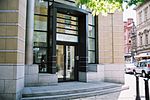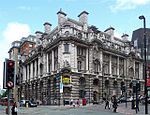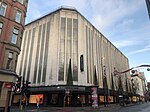St Ann's Church, Manchester
18th-century Church of England church buildingsAnglican Diocese of ManchesterChurch of England church buildings in Greater ManchesterChurches completed in 1712Churches in Manchester ... and 5 more
Grade I listed churches in ManchesterNeoclassical church buildings in EnglandSandstone churches in EnglandSquares in ManchesterTourist attractions in Manchester

St Ann's Church is a Church of England parish church in Manchester, England. Although named after St Anne, it also pays tribute to the patron of the church, Ann, Lady Bland. St Ann's Church is a Grade I listed building.
Excerpt from the Wikipedia article St Ann's Church, Manchester (License: CC BY-SA 3.0, Authors, Images).St Ann's Church, Manchester
St. Ann Street, Manchester City Centre
Geographical coordinates (GPS) Address Website External links Nearby Places Show on map
Geographical coordinates (GPS)
| Latitude | Longitude |
|---|---|
| N 53.481666666667 ° | E -2.2458333333333 ° |
Address
St. Ann's Church
St. Ann Street
M2 7LF Manchester, City Centre
England, United Kingdom
Open on Google Maps











